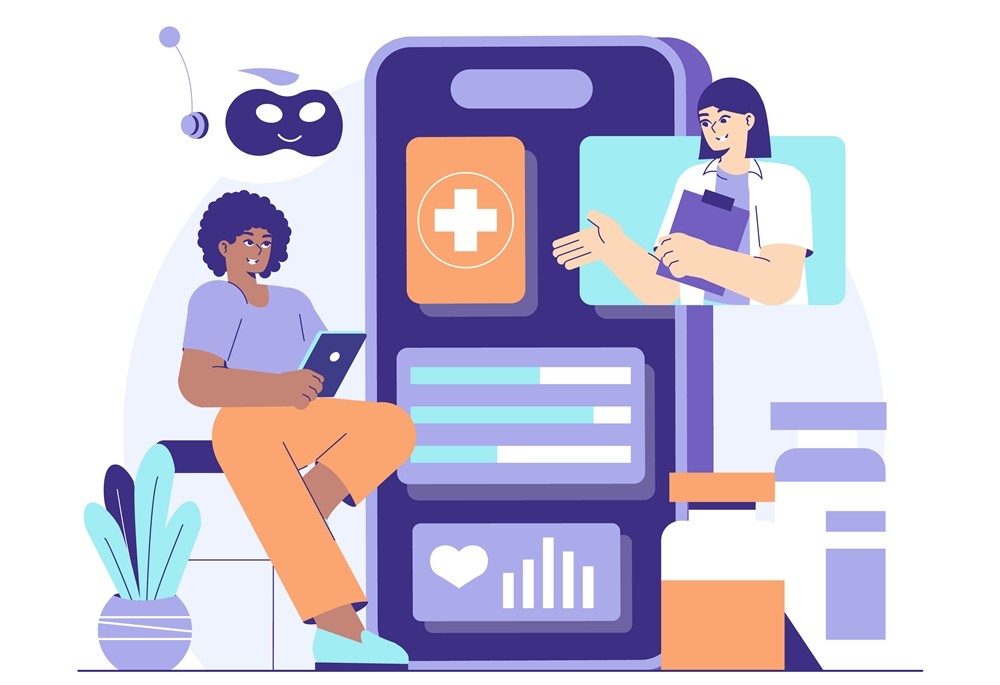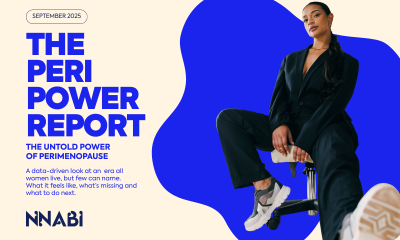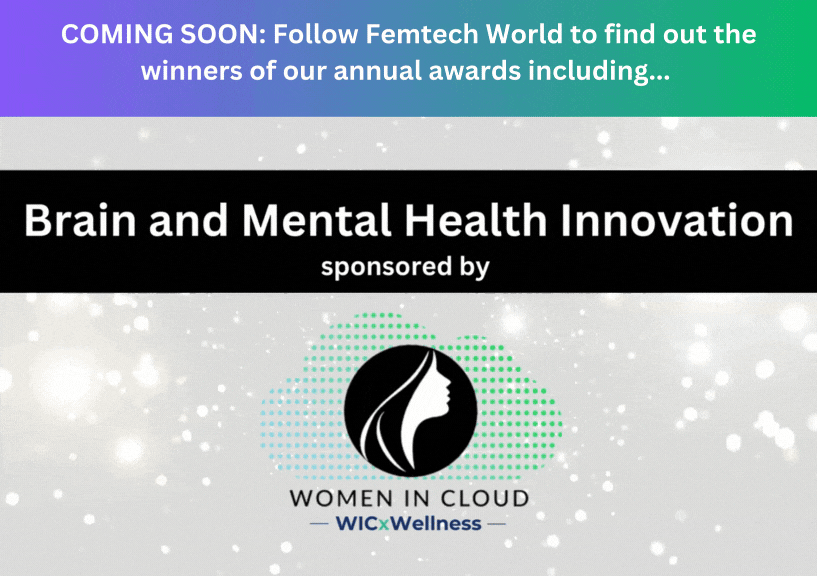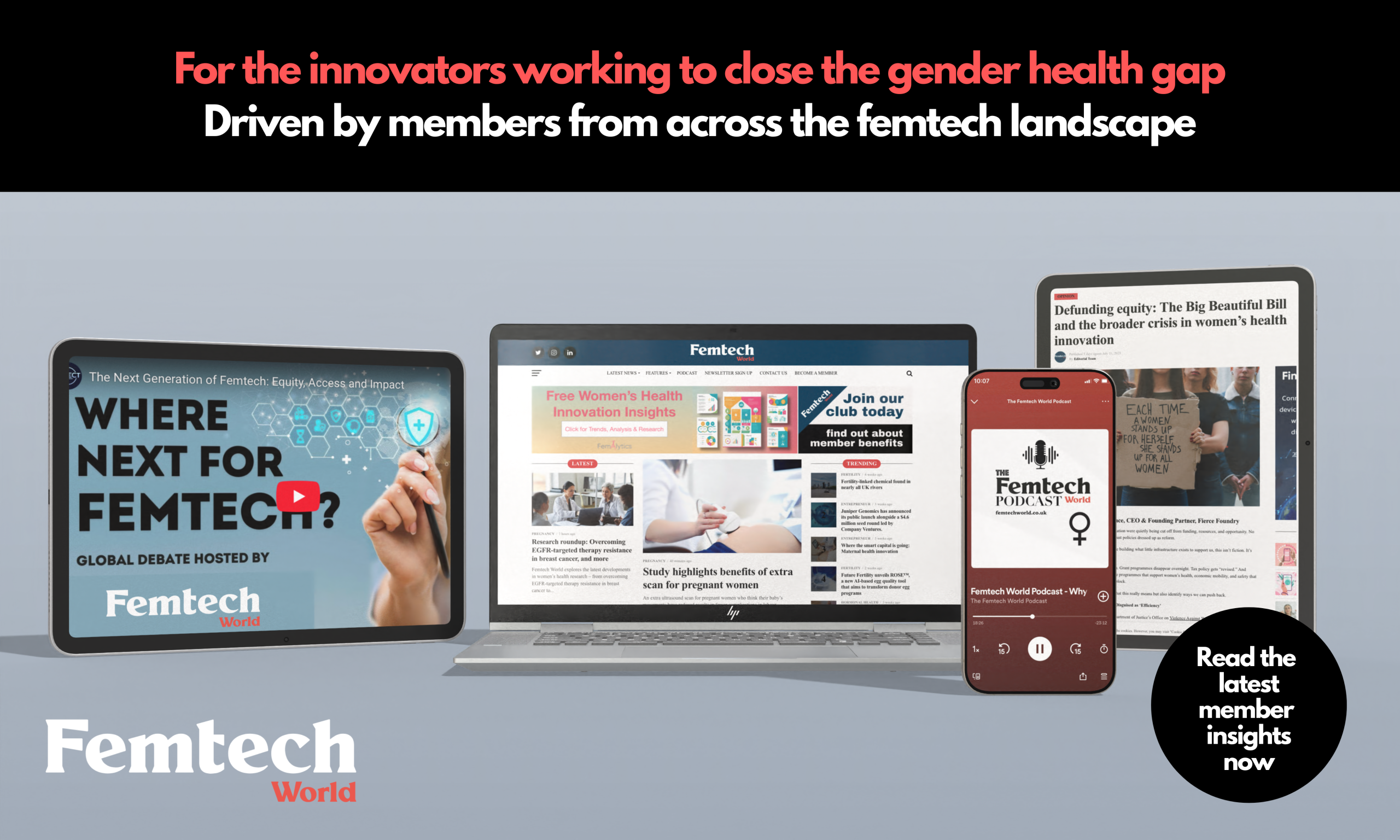Insight
Rethinking AI’s role in patient communication
Morgan Rose, Chief Science Officer at Ema

As generative AI grows more sophisticated, it is tempting to imagine a future where it replaces clinicians entirely. But that’s not the role we think it’s meant to play in healthcare.
Instead, we see AI as an emerging behind-the-scenes collaborator.
This type of AI use case supports clinicians by drafting messages, suggesting language, and helping manage patient communication at scale.
This kind of support doesn’t replace the clinician’s voice; it enhances it. And in women’s health, where trust, empathy, and clarity are non-negotiable, that enhancement isn’t just helpful, it’s essential.
Recent research from Stanford Medicine evaluated how large language models (LLMs) can support clinicians by drafting responses to patient portal messages.
The verdict?
AI didn’t necessarily save physicians time, but it did help make their responses longer, clearer, and more compassionate. For many clinicians, these drafts became helpful starting points rather than shortcuts.
This reflects a broader truth: AI doesn’t have to solve everything to be valuable.
Sometimes, its greatest strength is elevating the care that already exists by augmenting human empathy, not replacing it.
Patients Want Quality, but Trust is Fragile
A related study published in JAMA Network Open found that patients preferred the content of AI-generated messages to those written solely by clinicians.
But satisfaction dropped when they were told the messages were written by AI. In other words, the message mattered less than who they believed wrote it.
This finding underscores a deeper tension: the more transparent we are about AI, the more we risk undermining the trust we’re trying to build.
Yet transparency is ethically essential. So, how do we move forward?
Reframing Disclosure and Design
This is not a binary question of AI or no AI. It’s a design challenge.
The most effective approaches may involve co-branded messages, where clinicians remain central but AI support is acknowledged in a subtle, supportive way:
“This message was prepared by your care team with the help of digital tools to ensure timely and thoughtful communication.”
Clinicians must always remain in the loop, reviewing, personalising, and signing off on what patients receive. This isn’t about automation at the expense of connection.
It’s about using AI to support the fundamentals of good care: clear information, thoughtful tone, and meaningful context.
What This Means for FemTech
The stakes are high in women’s health. From fertility and birth control to postpartum support and menopause care, women want to feel heard, not routed.
That’s why the next wave of FemTech must go beyond automation. It should reflect the nuance of the care experience, using AI to empower—not replace—the human voice.
Tools like generative AI can surface medical insights, standardize follow-up, and even soften complex information.
But the best solutions will always be designed to serve the patient experience, not just efficiency metrics.
One UC San Diego study found that AI-assisted responses helped clinicians, who are often short on time, adopt a more empathetic tone.
And in a digital-first healthcare landscape, that might be the most powerful feature of all.
Looking Ahead
As AI becomes more embedded in portals, inboxes, and interfaces, we must ask what it can do and how it should behave.
This is the moment to co-design systems that center on care, trust, and transparency, especially for populations historically underserved by traditional healthcare models.
In the world of FemTech, this means creating AI that listens carefully, explains clearly, and never forgets the human on the other side of the screen.
Morgan Rose is a Certified Nurse Midwife, Women’s Health Nurse Practitioner, and International Board-Certified Lactation Consultant with over a decade of experience supporting women’s health. As the Chief Science Officer at Ema, Morgan combines her expertise with her passion for empowering women. She lives in New York City with her spunky daughter and their beloved dog.
News
Femtech describes a category. Women’s health describes a life

By Ema founder and CEO, Amanda Ducach
Ema’s claim to fame is that “she” was the first agentic AI for women’s health.
That means that as the CEO, I get to spend my days speaking with women’s health founders and funders about AI for women. And… I have noticed something that I wanted to share.
There’s a growing confusion in the market: “femtech” and “women’s health” are often used interchangeably. But while they’re deeply connected, they’re not the same.
All femtech is women’s health. But not all women’s health is femtech. Both matter. But the distinction matters, too.
Femtech: A Catalyst for Innovation, Not a Catch-All
Coined in 2016 by Clue founder Ida Tin, femtech provided a language for a long-overlooked corner of healthcare and has since become one of the fastest-growing verticals in digital health.
Femtech:
- Names a market that was previously invisible.
- Unlocks funding, innovation, and legitimacy.
- Centers historically neglected needs in health tech.
Today, femtech includes everything from fertility and contraception to menopause care, pelvic health, sexual wellness, mental health, and cancer screening.
It’s a category with momentum and one that is expanding.
But categories have limits. When we frame the full breadth of women’s health needs solely through the lens of femtech, we risk both narrowing the scope and limiting its impact.
That’s not a failure of the category. It’s a signal that we must build beyond it.
Women’s Health: Bigger Than a Market. More Complex Than a Milestone
Women’s health is a lifelong, whole-body experience.

Amanda Ducach
It spans:
- Cardiovascular, metabolic, neurological, and autoimmune conditions
- Mental health across life stages
- Hormonal transitions beyond reproduction (e.g., perimenopause, PCOS)
- The interplay of biology, identity, stress, and systemic bias
And yet, women remain underdiagnosed, undertreated, and underserved, partly because mainstream healthcare systems still don’t reflect their reality.
Women’s health encompasses more than just gynaecology. It’s a biopsychosocial model of care that sees women in full, not just in episodes.
Why the Distinction Matters
Femtech is growing, but funding remains concentrated in specific stages, including fertility, pregnancy, and postpartum. These are deeply important, but they’re just a fraction of the health journey.
Most of women’s health happens outside of reproduction.
Think: PMDD in adolescence, anxiety in early adulthood, migraines and autoimmune flare-ups, perimenopause in midlife, and heart disease risk post-menopause.
When investment flows into what’s easiest to monetise in the short term, we risk reinforcing a narrow story of what women need and when.
The result? Gaps in care, missed opportunities, and underserved lives. The risk isn’t that femtech is too small. It’s that we treat women’s health as if it is.
Femtech as a Bridge, Not a Box
The future isn’t about picking sides. It’s about connecting categories with complexity.
Femtech is an essential bridge: from invisibility to visibility, from stigma to innovation. But it’s not the endpoint. To meet women where they actually are, we must:
- Design for the whole hormonal arc, not just milestones.
- Expand data models to reflect lived experience across race, gender identity, and life stage.
- Invest in long-term conditions, not just urgent ones.
- Prioritise prevention, quality of life, and self-trust, not just outcomes that are easily measurable.
As the Health Innovation Network warns, without this evolution, even well-intentioned femtech could inadvertently widen the health equity gap.
The Bottom Line
Femtech is a powerful industry. Women’s health is a lifelong mission.
All femtech is women’s health. But not all women’s health is femtech.
Recognising that is how we build products and care systems that actually fit women’s lives.
Find out more about Ema at emaapp.co
Insight
Study uncovers protective function of morning sickness

Morning sickness symptoms such as nausea and food aversions are linked to healthy inflammatory responses that help protect both mother and fetus during pregnancy, new research shows.
Up to 80 per cent of early-stage pregnant women experience nausea, vomiting and aversions to certain foods or smells.
Researchers say these symptoms point to a delicate immune balance rather than health problems.
The responses appear to be part of the body’s mechanism for tolerating the half-foreign fetus while avoiding potentially harmful substances.
UCLA researchers studied blood samples from 58 Latina women in Southern California, measuring cytokines — proteins that regulate immune responses — while tracking morning sickness symptoms through questionnaires.
Sixty-four per cent reported odour or food aversions, mainly to tobacco smoke and meat. Sixty-seven per cent experienced nausea and 66 per cent vomiting.
Women with aversions to tobacco smoke showed a stronger shift toward inflammatory responses. Nausea, vomiting and food aversions were also tied to more pro-inflammatory immune activity.
Molly Fox, UCLA anthropology professor and corresponding author, explained the challenge for the immune system in pregnancy.
She said: “During pregnancy, a mother’s immune system faces a tricky challenge: it has to protect both her and the fetus from infection, but without accidentally attacking the fetus, whose genetic identity is half-foreign because it is half derived from the father.
“Normally, the immune system attacks anything that seems foreign, so in pregnancy, it has to carefully adjust to keep the fetus safe while still defending against infection.”
The researchers believe this immune balance protects mother and fetus while behavioural responses — such as avoiding certain foods — add another safeguard, especially in the first and second trimesters.
Daniel Fessler, UCLA anthropology professor and co-author, stressed the protective role of these symptoms.
He said: “Nausea, vomiting or aversions to foods or smells are not indications that something is going wrong for the mother or the fetus.
“It’s likely an indication that everything is moving along normally, and a reflection of the body’s healthy and helpful immune response.”
Fox noted that human pregnancies face unique challenges.
In many mammals, the fetal compartment has barriers separating it from the mother’s blood supply, where her immune cells are.
But in humans, we have a unique setup — fetal cells are bathed in maternal blood. Humans have the most invasive of all placentas, burrowing deep into maternal tissue.
So humans need unique strategies to prevent the mother’s immune system from attacking the fetus.”
Fessler added that these responses may be evolutionary adaptations.
The researcher said: “Nowadays, you will see labels on packages of ground beef or soft cheese that warn pregnant women to be cautious about these products because of the risks of foodborne illness during pregnancy.
“Aversions to certain odours and foods, and nausea and even vomiting, appear to be evolution’s way of achieving that same objective.”
The team said their findings could help reinforce the idea that nausea and vomiting are normal pregnancy symptoms with biological roots, potentially supporting calls for workplace adjustments and reducing stigma.
News
Childhood trauma in mothers increases preterm birth risk

Mothers who experienced childhood trauma face nearly double the risk of preterm birth, with 12.6 per cent delivering early compared with 6.7 per cent of those without trauma, new research has found.
The study reviewed 823 mothers who gave birth to 1,285 children between 2011 and 2021, finding that 38 per cent had lived through two or more adverse childhood experiences.
Specific traumas such as physical abuse, emotional abuse and exposure to parental violence were most strongly linked to premature delivery.
Adverse childhood experiences (ACEs) are potentially traumatic events in childhood, including abuse, neglect and household disruption.
Children may be affected by witnessing such incidents even if not directly harmed.
Preterm birth, defined as delivery before 37 weeks of pregnancy, can increase health risks for newborns.
Dr Molly Easterlin, neonatologist at Children’s Hospital Los Angeles and assistant professor of clinical paediatrics at the Keck School of Medicine of USC, said the results highlight the lasting consequences of childhood trauma.
“These findings provide further evidence that the effects of adverse childhood experiences may be passed from generation to generation and support action through public health and policy initiatives and clinical care to prevent and mitigate childhood trauma.”
Most of the mothers studied (62 per cent) reported zero to one adverse childhood experience, while 38 per cent had two or more.
The researchers suggest obstetrics teams should consider screening for ACEs to help guide care and identify families needing more support or closer follow-up.
The study indicates that childhood trauma may affect health outcomes long after youth, extending into reproductive years.
According to the Centers for Disease Control and Prevention, ACEs include physical, emotional and sexual abuse, neglect, and different forms of household dysfunction.

 News9 hours ago
News9 hours agoMothers’, not fathers’, mental health directly linked to their children’s, study shows

 Menopause5 days ago
Menopause5 days agoNew report exposes perimenopause as biggest blind spot in women’s health

 News8 hours ago
News8 hours agoScientists turn human skin cells into eggs in IVF breakthrough

 Features3 weeks ago
Features3 weeks agoThe Future of femtech: Rebuilding the investment landscape

 Diagnosis1 day ago
Diagnosis1 day agoDaily pill could delay menopause ‘by years,’ study finds

 Entrepreneur4 weeks ago
Entrepreneur4 weeks agoUCL spin-out raises £2.5m to improve infant health with breast milk microbiome

 News4 weeks ago
News4 weeks agoWeightWatchers debuts menopause programme with Queen Latifah

 News4 weeks ago
News4 weeks agoWomen in UK with PCOS facing widespread failures in treatment, report finds





























